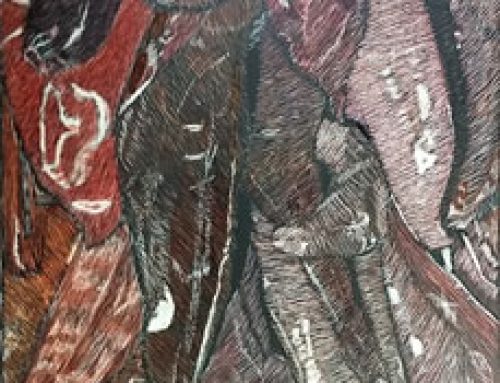Structure Points
Disclaimer
The framework built within this multi-part blog is for educational purposes only. It is presented only as an example. All rights are reserved (of course), but the author does grant permission for others to use it as an outline for practice and creation of derivative unpublished works in all media.While there is still more character development to do, with the solidifying of Johnny we can now think about the plot. Though you well remember the structure of a story, it doesn’t hurt to refocus ourselves to that basic foundation: beginning-middle-end (Acts 1 thru 3).
With our definition of Johnny, I think we can be fairly confident that a wedding is going to take place in Act 3. It’s also not a big leap to think that some sort of disruptive hijinx are going to occur at that wedding. Here’s the big question: is the wedding all of Act 3, or just the climax? I’m sort of leaning for it to be the climax. Unfortunately for us, the writers, we now have to think of what leads us *to* that climax.
The things we need to think about are the plot points that end each of the first two acts. As you recall, plot points are supposed to spin the action into a totally new direction. Also, we have to consider the midpoint, which also spins the story about but which also reaffirms our main message. All of this is easy for some, but being that the structure of the story depends on these decisions, many writers (myself included) sometimes feel a little intimidated. The trick, really, is not to worry about it. Just do something that makes at least a little sense in the context of the story, and you’ll come out fine.
Act 1
So, let’s see. The first act is primarily concerned with introducing our characters in a bold and dramatic way while still showing them with their ordinary lives in the ordinary world. Now, someone who has never written before might be tempted to have the hiring of Johnny be the first plot point. I’ll concede that it would be the catalyst for further action, but it’s not really big enough. How about if Johnny already works for the sisters in the first Act. The plot point is gang retaliation against Johnny that also affects the sisters. Let’s say, the gang steals their non-delivered and in-progress art, as well as the safe holding their records and their on-site raw precious metals and stones. Johnny would then want to do right by the sisters, and the sister’s desperation forces them to help their business survive. Since Mel is the main character, she goes with Johnny into gang land, while KT goes a more conventional route.
Act 2
KT and the family don’t really approve of Mel going along with Johnny, and that leads to tension and conflict. Leading us to the midpoint, which reaffirms the story we’re telling — Johnny’s love of his non-gang girlfriend. Let’s make Johnny’s life worse by having his girlfriend being forced (blackmail? extortion?) to wed Johnny’s long-time rival (or former buddy, now rival). But, we have to make this Mel’s story, so it needs to be her to recognize the situation and be the driving force to get Johnny and his girl back together.
This is what leads us to the second plot point, which must again focus on making the sister’s lives a living hell. What’s the worse thing that we can do to totally mess up their lives so that it seems that all is lost? If we really dump on them, we’d have something like: the parent’s house burns down leaving all to think that KT burned to death inside, while it looks to the police like Johnny (and maybe also his girl) started the blaze intentionally… a tip suggested that Johnny was going to the house to retrieve the stuff *he* stole from the sisters, and he would then get rid of any witnesses.
Act 3
So, in Act 3, we learn that the tip is from the gang in an effort to frame Johnny. As insurance, they are holding KT. With everything all messed up, the only one free to act is Mel. She uses her contacts (from when she was trying to get the girlfriend out) to help her find her sister, and to also get evidence about the gang’s frame (we’ll make them stupid enough to have taped the whole thing).
Still, the course of true love never did run smooth. Not all the gang is rounded up, and there’s yet one more big blowup at Johnny’s wedding. It eventually concludes favorably, but we end with Mel and KT exhaustedly sitting with their backs against a wall, each one covered in some sort of schmutz (cake? blood? punch?), finding comfort in the other. Mel says, “I don’t think I ever want to get married.” Looking At Where We Are
With all of this laid out, I realized that we’ve skipped something. Our main characters have to grow… learn some lesson, something. As the “Hero’s Journey” informs us, when the hero returns to the ordinary world, they are different, and no longer fit in as well as they once did. This experience will have left a mark on Mel (and probably KT as well). Before writing the text can begin, serious thought needs to be given as to what fundamentally changed with our main character.
It does seem like Mel was more of a romantic at heart… after all, she went off on an adventure with Johnny. Now, she sees what sort of pain that can lead to. Her final line, seemingly humorous before now comes off as a weary realization. She’s still a romantic, but maybe not willing to fight for it like Johnny and is girl were.
This is a subtle thing. We didn’t see it at first, but I think you can see how a word here, a thought there, even the quickening heartbeat of a dangerous situation can lead Mel in this direction. The trick here is to not underline it in the text. Don’t draw a lot of attention to it. As long as the writer knows this truth about the character, it will come through in the writing (just trust me on that).
Thoughts
At this point, I think it’s becoming apparent how a story gets built. It’s just a lot of decisions that the writer simply brainstorms. I like to think that the craft part of writing comes with this sort of development process. Just as it’s not generally the wisest course to start building a house before the blueprints are drawn up, neither should a writer jump feet-first into any substantial effort without some good idea of how all the pieces are going to fit together.
Right now, all we have is the barest of bones of an outline. Writers who like to write on-the-fly will likely stop at this point, feeling that they have enough. Me…I’d to a little bit more. There needs to be a fuller development of Johnny, as well as histories of his girlfriend, maybe her family and friends, as well as for several members of the gang. Don’t forget people in the neighborhood… not just shopkeepers, but also the snitches, or the neighborhood hermits too scared to come out but willing to take a chance for the idea of love. Obviously there is much work yet to be done before writing the narrative commences.
And keep in mind, I only sketched out enough for a short story. Seems like a lot of work for just a short story, doesn’t it? It is. Sure, you can short-change parts of it, but if you do, you then have to be mindful to not let your supporting characters become too formulaic. I will admit, it’s tough to put in the effort for these lesser characters. At a minimum I’d suggest that writers (me included) think about what the needs of the story are and plan detailed bios for the minor characters that are going to have the biggest impact on the story. Just remember that when you get to undeveloped characters in the writing, you’re still going to have to give them some depth.
There are advantages to this method method of fleshing out lesser characters as you go, however. One of the pitfalls of doing too much research and development before you start actually telling the story is that you can suck some of the life out of it… you lose some of the spontaneity. Only you can gauge how flexible you want the story to be, but part of the discipline of writing, as well as the carrot on a stick that makes the writer finish, is to have done enough of the pre-planning so that the story is alive in the author’s head.
I will also say that this was only one way to create a story. It was based on the premise that we went in without knowing what to write. So using some imagination and some brainstorming, a story sprang forth. Whether or not it is worth writing (or, more pointedly, worth it for a particular writer to write) was immaterial. Like I said, it was the process of development on display here, not of Muse-inspired genius.
Often, you will start the process having more specific thoughts in mind about a story you want to write. The tools demonstrated here still fit into that. Here’s the trick. As much as you can, try to develop each character separate from your own preconceptions. By that I mean don’t try to make the character into something that will fit into your plot… instead, use the premise as merely a whisper while you construct the symphony of a character’s biography. The premise, or more specifically the time and setting, is the context at this stage, nothing more. Let the characters become who they become due to what HAPPENED (past tense) in their lives, not what you are trying to make them become in the future. The writing of the text will take care of the present and future stuff, and the character’s own past will dictate how they act and react to the obstacles you throw in their way. So let the dog wag the tail instead of the other way ’round.
It sounds so easy when you’re the one giving the advice. I know it is not. I’ve been writing for quite some time, learning these lessons the hard way, and I still have to keep reminding myself of what makes a good story (as opposed to a formula story). Sadly, it does take work. Happily, the results are usually worth it.
In the spirit of not being repetitious, redundant, and doing little more than saying the same thing again and again; here is where I am going to stop on our little building project. As I said, I would tend to work on it some more in the areas that I’ve already mentioned, but we’ve done the bare minimum necessary to make it likely that what we write will be a coherent story — one with distinct and non-formulaic characters, and a plot that evolves organically based on the foundation we built. Now it’s up to the writer to both guide their characters while also allowing themselves to surrender the storytelling to their “children” when the occasion arrises. Having done the prep, that time is sure to happen.
Enjoy, and go with the flow.
Don’t forget to check out the other parts of this series:
Part 1 – Premise and Parents
Part 2 – Main Characters
Part 3 – The Support Character and Plot Happens
Part 4 – Building the Plot (this part)





